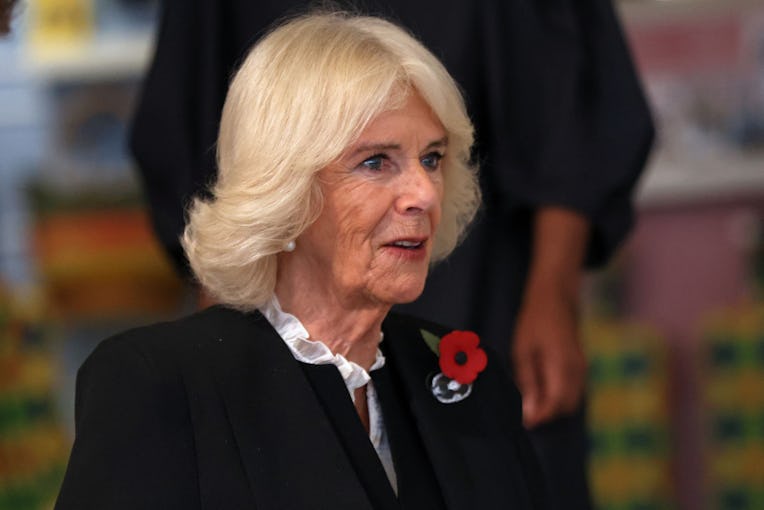Queen Camilla Is Reclaiming the R Word
It means WHAT in Latin???

Camilla, the Queen Consort, has endured several decades of name calling. When she was a young woman with the given name Camilla Shand, she was referred to as one part of the “Sexy Shands,” due to being sexy in a rugged, wet-booted sort of way. Princess Diana famously called her “the Rottweiler” for reasons I won’t get into because – despite everything I’ve ever said or written – I am a feminist. But now, as reported by the Daily Mail, she’s signing off a fat stack of condolence cards (many months late, may I add…) with a brand new name.
The name reveal is the proof in the steamed lard pudding that the monarchy can change and grow. Take it from her step-daughter-in-law, the woman known as Meghan Markle. Now she just goes by Meghan the Duchess of Sussex. Kate Middleton became “Catherine” (chic). Late in her life, Queen Elizabeth, who once only responded to the sobriquet “Lilibet,” became known to readers of this website as “Lilibet Senior,” a major adjustment. That’s a dynamic dynasty, alright.
“So what’s Camilla’s new name?” you’re screaming. I’ll give you a hint. It has an R in it.
It isn’t Rapunzel, for her thick golden tresses spun from pure gold.
It isn’t Royalinessa, a honeyed combination of syllables fit for my Queen Consort.
It isn’t even Her Robustness, which she is.
No no, she’s officially changed her name from “Camilla” to “Camilla R.”
Woah, ho ho. Camilla Randy? Camilla Raw? Camilla Rabbit? Camilla Rowles-Rarker-Rountbatten-Rindsor?
Now this is gonna take some getting used to.
No, no, it just stands for “Rex” or “Regina,” which means “ruler” in Latin. Her husband “King” Charles has been signing off as “Charles R.” too, when that bloody fountain pen isn’t trying to sabotage him every stinking time. Lilibet Sr. signed off as “Elizabeth R.” too. Her husband, Prince Philip, did not.
As historian Marlene Koenig told Harper’s Bazaar, “It designates the authority of the sovereign. You will find the use of 'R' as far back as Henry I [who ruled in the early 12th century]. It is how they sign all official documents, as well as formal letters, etc.'”
Hopefully you and your husband are touched by my words of comfort.
-Claire R.